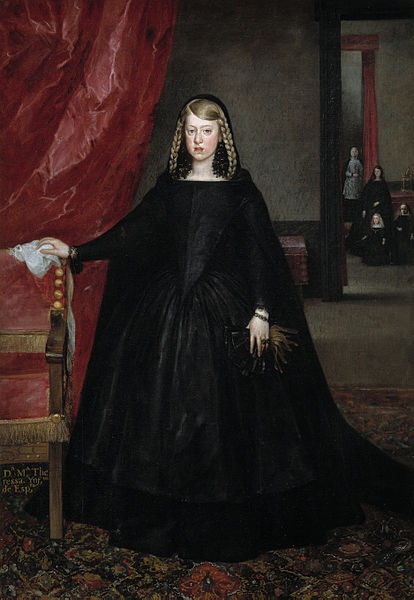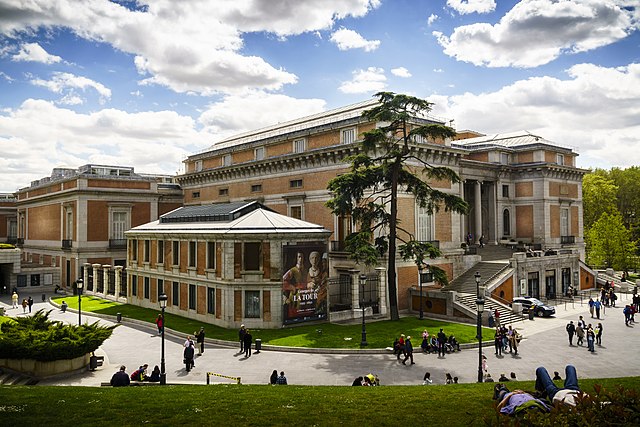Las Meninas is a 1656 painting in the Museo del Prado in Madrid, by Diego Velázquez, the leading artist of the Spanish Baroque. It has become one of the most widely analyzed works in Western painting for the way its complex and enigmatic composition raises questions about reality and illusion, and for the uncertain relationship it creates between the viewer and the figures depicted.
Las Meninas
The Infanta Margaret Theresa (1651–1673), in mourning dress for her father in 1666, by del Mazo. The background figures include her young brother Charles II and the dwarf Maribarbola, also in Las Meninas. She left Spain for her marriage in Vienna the same year.
Detail showing Philip IV's daughter, the Infanta Margaret Theresa. Most of her left cheek was repainted after being damaged in the fire of 1734.
Key to the people represented: see text
The Museo del Prado, officially known as Museo Nacional del Prado, is the main Spanish national art museum, located in central Madrid. It houses collections of European art, dating from the 12th century to the early 20th century, based on the former Spanish royal collection, and the single best collection of Spanish art. Founded as a museum of paintings and sculpture in 1819, it also contains important collections of other types of works. The numerous works by Francisco Goya, the single most extensively represented artist, as well as by Hieronymus Bosch, El Greco, Peter Paul Rubens, Titian, and Diego Velázquez, are some of the highlights of the collection. Velázquez and his keen eye and sensibility were also responsible for bringing much of the museum's fine collection of Italian masters to Spain, now one of the largest outside of Italy.
Exterior of the Prado Museum
Museo del Prado (front façade)
In the main exhibition hall, first floor
Francisco Goya, La maja desnuda, oil on canvas, (c. 1797–1800)








